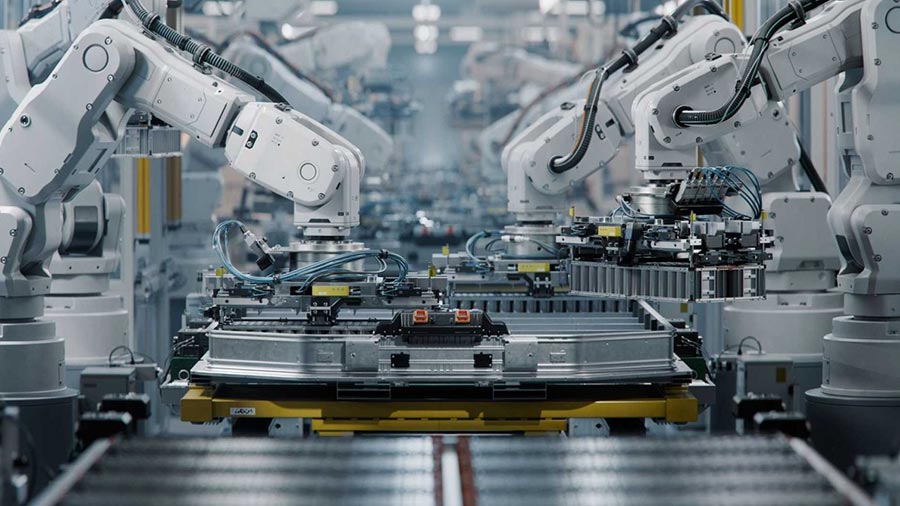China Manufacturing versus Mexico Manufacturing: Who Wins?
Op/Ed By Chris Devonshire-Ellis
The recent coronavirus (Covid-19) outbreak in China has raised many “Alternative China” hands, and especially from businesses in the US. This, coupled with the fairly recent decision to replace the existing North American Free Trade Agreement (NAFTA) with the President Donald Trump initiated United States-Mexico-Canada Agreement (USMCA) has led some to speculate that bringing jobs and production closer to home – or at least to nearby Mexico – from China may be a viable alternative to retaining sourcing or production in the PRC.
This has been the state of play envisaged by Dan Harris over at the China Law Blog, whose recent article Would The Last Manufacturing Company in China Please Turn Out The Lights (Part 4) states that “within three years nobody will be making widgets in China anymore” as well claiming that US businesses buying from the PRC “may be hit with a 200% duty on widgets you bought from China” and that “US foreign policy is to drive business from China to countries like Mexico.” It is the latest in a long series of anti-China sentiment from a lawyer and firm actually based in Seattle and with no professional grounding in China – or Mexico – for that matter.
Nonetheless, the Mexico issue does occasionally crop up. So, what is the real deal when it comes to manufacturing in Mexico compared with China? Our practice, Dezan Shira & Associates, has close to 30-years experience in China, 12 mainland China offices, several hundred staff, and thousands of clients. Many are American, some Mexican. And while we don’t ourselves have a presence in Mexico, we have six well established and sizable local partner firms who we meet with regularly at various events. These includes three firms in Mexico City, as well as in Guadalajara, Monterrey, and Aguascalientes.
In contrast, Harris Bricken have just one firm they use (presumably to sub-contract their US clients work) in China, a local company called Deshengde Consulting Co. Ltd, based in Beijing, and who they specifically state on their website do not practice Chinese law. That underlines their actual China legal accreditation, capabilities, and experience: none. “China Law Blog” and the Harris Bricken firm isn’t actually qualified to practice law in China, so go figure.
And then, there is wide difference between what China Law Blog is saying about China and Mexico and what we are experiencing about China and Mexico. Harris states that “Nearly all of our clients would like to cease having their products made in China” and that Mexico Is The Winner In The US-China Trade War. Elsewhere, the China Law Blog states Manufacturing In China Got You Down? Make A Run For The (Mexican) Border. Meanwhile Harris Bricken, the firm behind China Law Blog, consistently discuss their clients unhappiness with China on their blog and the fact they wish to leave, and have done for the past two years. The funny thing is – we see very little of that. With Harris’s firm not having had a legal presence in China or Mexico – and their occasional references to cannabis regulations – is it possible the skies above Seattle waft a little more pungent than is normal? We do enjoy a bit of a laugh at their articles.
Anyway, enough of the (anti) China Law Blog’s pontificating. They are amusing, in a weird kind of way about how much they get wrong, and especially concerning China. But more seriously, their clients in China must constantly despair at being told the solution to their problems is actually to leave, rather than be given any practical on-the-ground advise.
The position concerning Mexico
Concerning Mexico, although there is some hype about relocating US businesses to the country from China, we haven’t had any inquiries whatsoever from our American client base in China about relocating part or all of their production to the country. Neither have any of our (six) Mexican partner firms.
On a map, shifting production to Mexico makes sense, as it is right next door to the US. However, there are issues, not least the current US President’s obsession with building a wall between the two countries – hardly conducive to bilateral trade.
In terms of NAFTA, this is still in place, at least until the proposed USMCA deal is ratified, which it hasn’t been – at this point. One issue with this is uncertainty over when the agreement will take place, and there remain sticking points, not least Washington’s insistence that Mexico raise its minimum wage for autoworkers to US$16 per hour. While that is competitive for the US, it is a disaster for Mexico’s exports to other Latin and South American countries, where the minimum wage is US$6.7 in Venezuela, US$1.2 in Brazil, and US$1.65 and US$10 in neighboring Belize and Guatemala, respectively. Consequently, there is Mexican push-back concerning parts of the USMCA. While that remains, American investors are reluctant to commit.
That is coupled with the US dollar / Mexican peso position – currency movements are always a factor in longer term business and investment planning and especially within the US. As it turns out, while the US dollar has been doing fine – the Mexican peso has been doing better the past year – rising in strength against the dollar by 2.3 percent. If that continues, margins can easily be wiped out in two to four years. Again, this is an issue that is holding investment back, and is one reason why US foreign direct investment into Mexico has been slipping back the past year, and in Q3 last year had declined to less than 1/3 of the total. In fact, Spain as a source for Mexican FDI is becoming close to surpassing the US as Mexico’s number one investor.
Investment though is a different animal from trade, which increased to US$614.5 billion in 2019. This suggests that while the US is buying more produce from Mexico, it is holding back on investing there. The strength of the peso and outstanding trade issues are currently depressing US appetite for making investments into the country.
But there are practical considerations too. Mexico has a crime and labor management problem, trade unions are very active and can be disruptive, while absenteeism remains an on-going issue. This is without having to deal with poor infrastructure, logistics (although Mexican port operators are generally first class), and transport networks.
Here is a country in which the US really ought to be taking advantage of current low interest rates and doing deals with Mexico to upgrade its infrastructure, and lead those roads and rail lines back to the US border, just as China has been doing with its Belt and Road Initiative in Southeast Asia.
Instead, while the US has reduced aid to Mexico, the Mexican government itself has just launched a US$44 billion plan to upgrade infrastructure within the country.
By comparison, the US invested US$236 million last year in the country, far less than the US$1 billion China has just committed to the tiny Asian island of Sri Lanka. The issue with Mexico’s US$44 billion infrastructure plan is that it will benefit Mexican trade and not exclusively that with the US. These days, US$236 million just builds you 50 miles of highway in the US, and it is nowhere near enough to significantly increase US trade infrastructure with Mexico.
There is also an issue in Mexico with sourcing components. Mexico imported US$66 billion from China last year, while China imported just US$5 billion from Mexico. In short, what this means is that even if a US manufacturer or sourcing business relocated its operations to Mexico, it would still find itself reliant on Mexican imports from China, and especially of component electrical and auto parts.
According to Trading Economics, the top six items Mexico imported from China last year were:
- Mechanical and electrical products;
- Machinery and transport equipment;
- High and new-tech products;
- Wireless phone components;
- Automatic data processing equipment & components; and
- Integrated circuits.
Basically, moving to Mexico won’t stop the China reliance.
In comparison, in China labor is disciplined, the infrastructure works, there is a weakening yuan against the US dollar (making Chinese goods cheaper) and a Phase Two Trade Deal in the offing later in the year.
There will always be those who panic when times get tough, and the Covid-19 spread has shown that nowhere is infallible. For now, Mexico as an alternative to China is too early and panicky a move. Mexico needs time to start to see the benefits, expected by 2024 from its US$44 billion infrastructure drive, as well as having to ratify the USMCA. A weakening peso would also help. As for unionization and labor management, these are political and educational problems, and can be dealt with over time.
Mexico as an investment destination is an interesting option. But it is most certainly not an alternative to China. For those, the article Fed Up with Covid-19? These Are the China Plus One Alternatives is a rather more realistic approach as to how US sourcing and manufacturing businesses can reduce their China risk dependence. As for Dezan Shira & Associates, we’ve been warning about that since at least 2012.
China will soon come back to operational capacity; it just requires a bit of patience. Running for the borders, meanwhile, is clearly not the answer.
(Editors Note: China Briefing is in the top 100,000 of global website views and is ranked 91,787 by Alexa. China Law Blog is in the top 5 million of global website views and is ranked 2,830,870. Our China Belt & Road Initiative website, Silk Road Briefing, featuring a lot of data concerning new emerging markets and investment costs is ranked 989,808.)
Related Reading
- Minimum Wages, Available Workforce and Individual Income Taxes for All Countries and Territories in China’s Belt and Road Initiative
- China’s Support for Foreign-Invested Enterprises to Cope with the Covid-19 Outbreak
About Us
China Briefing is written and produced by Dezan Shira & Associates. The practice assists foreign investors into China and has done since 1992 through offices in Beijing, Tianjin, Dalian, Qingdao, Shanghai, Hangzhou, Ningbo, Suzhou, Guangzhou, Dongguan, Zhongshan, Shenzhen, and Hong Kong. Please contact the firm for assistance in China at china@dezshira.com.
We also maintain offices assisting foreign investors in Vietnam, Indonesia, Singapore, The Philippines, Malaysia, and Thailand in addition to our practices in India and Russia and our trade research facilities along the Belt & Road Initiative.
- Previous Article Fed Up with Covid-19? Here Are the China Plus One Alternatives
- Next Article How China Added Another 1.4 Billion Low-Cost, Offshore Workers to its Production Capacity

























